IT’S the most common form of cancer in the UK – killing seven Brits every day.
But, would you know if you were developing skin cancer? Can you tell the dangerous moles from the harmless?
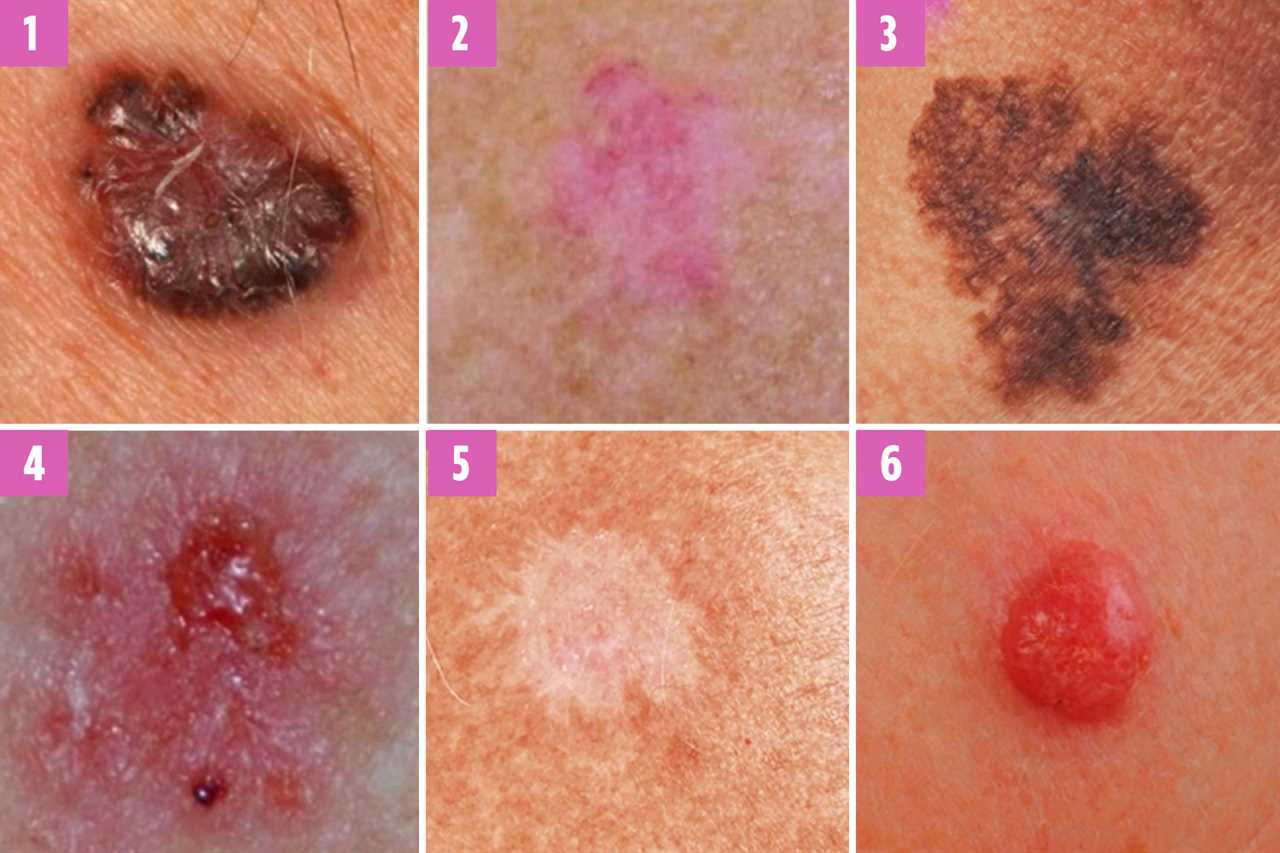
All of the above are dangerous: 1. Basal cell carcinoma 2. BCC on the trunk 3. Malignant melanoma on the neck 4. BCC on the trunk 5. BCC on the shoulder 6. Mixed melanoma
Caught early, skin cancer has a good survival rate – 90 per cent if the disease is detected at stage one. And experts estimate 86 per cent of cases are preventable.
Millions of Brits are putting their lives at risk, with one-in-ten – including kids as young as eight – using sunbeds.
Doing so before the age of 35 increases your chance of developing melanoma – the deadliest form of skin cancer – by a horrific 87 per cent.
That’s why Fabulous launched the Dying For A Tan campaign, to raise awareness of the dangers sunbeds pose.
The most common sign of skin cancer is a change to a mole, freckle or normal patch of skin.
Here, we share the symptoms you need to know – to spot the signs of the three most common skin cancers.
Melanoma
When it comes to moles, they are usually about a quarter of an inch in size, evenly coloured brown, tan or black and can be flat or raised.
Some are present at birth, but most appear as children or young adults and once they’ve developed, they usually stay the same size, shape and colour.
The most important warning sign of melanoma is a new spot on the skin or when a mole changes in appearance.
Superficial spreading melanoma
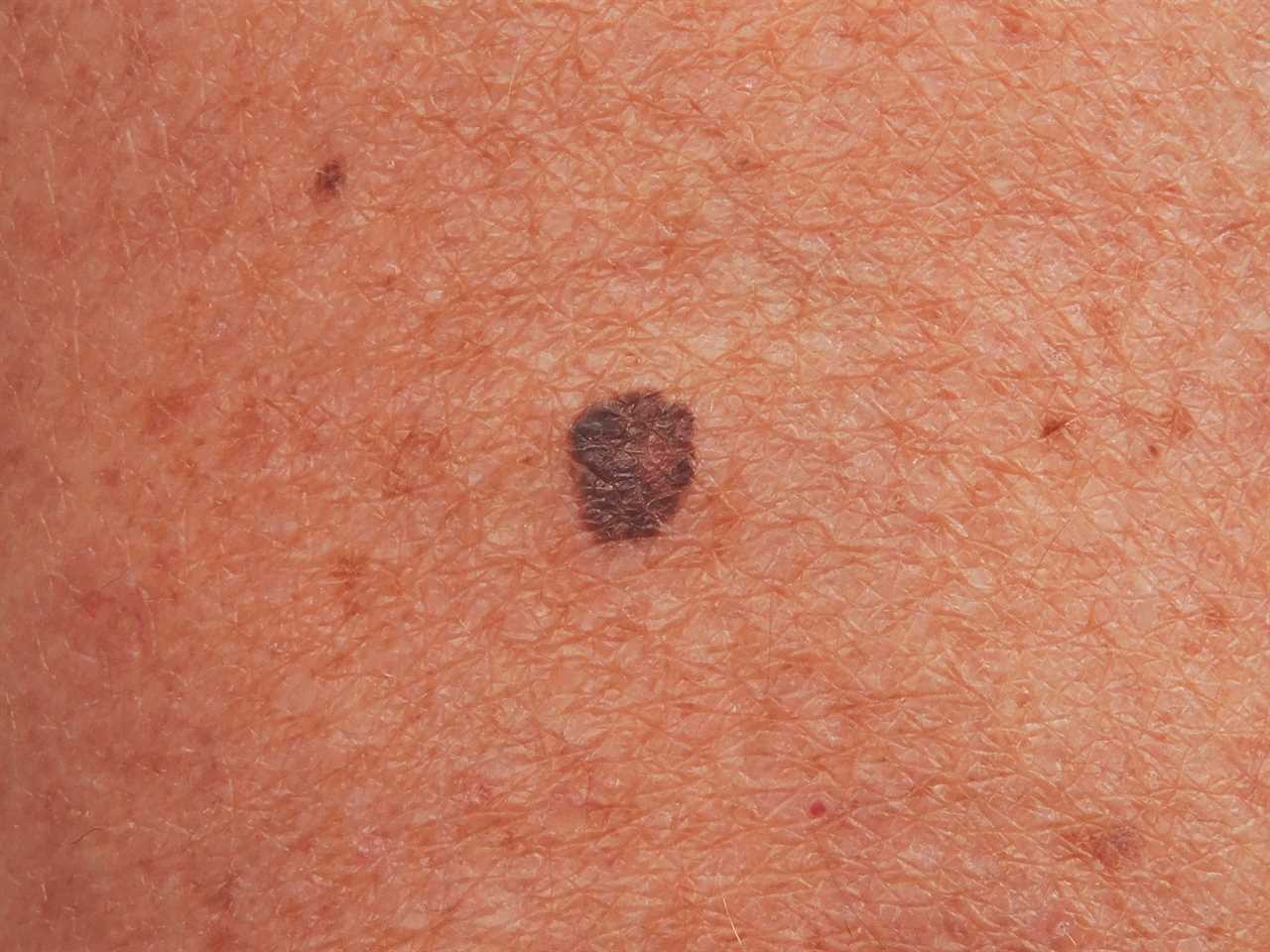
Around 70 per cent of all melanoma cases in the UK are superficial spreading melanomas.
They’re more common in people with pale skin and freckles, and much less common in darker skinned people.
They initially tend to grow outwards rather than downwards, so don’t pose a problem. However, if they grow downwards into the deeper layers of skin, they can spread to other parts of the body.
Therefore, you should see your GP if you have a mole that’s getting bigger, particularly if it has an irregular edge.
Nodular melanoma
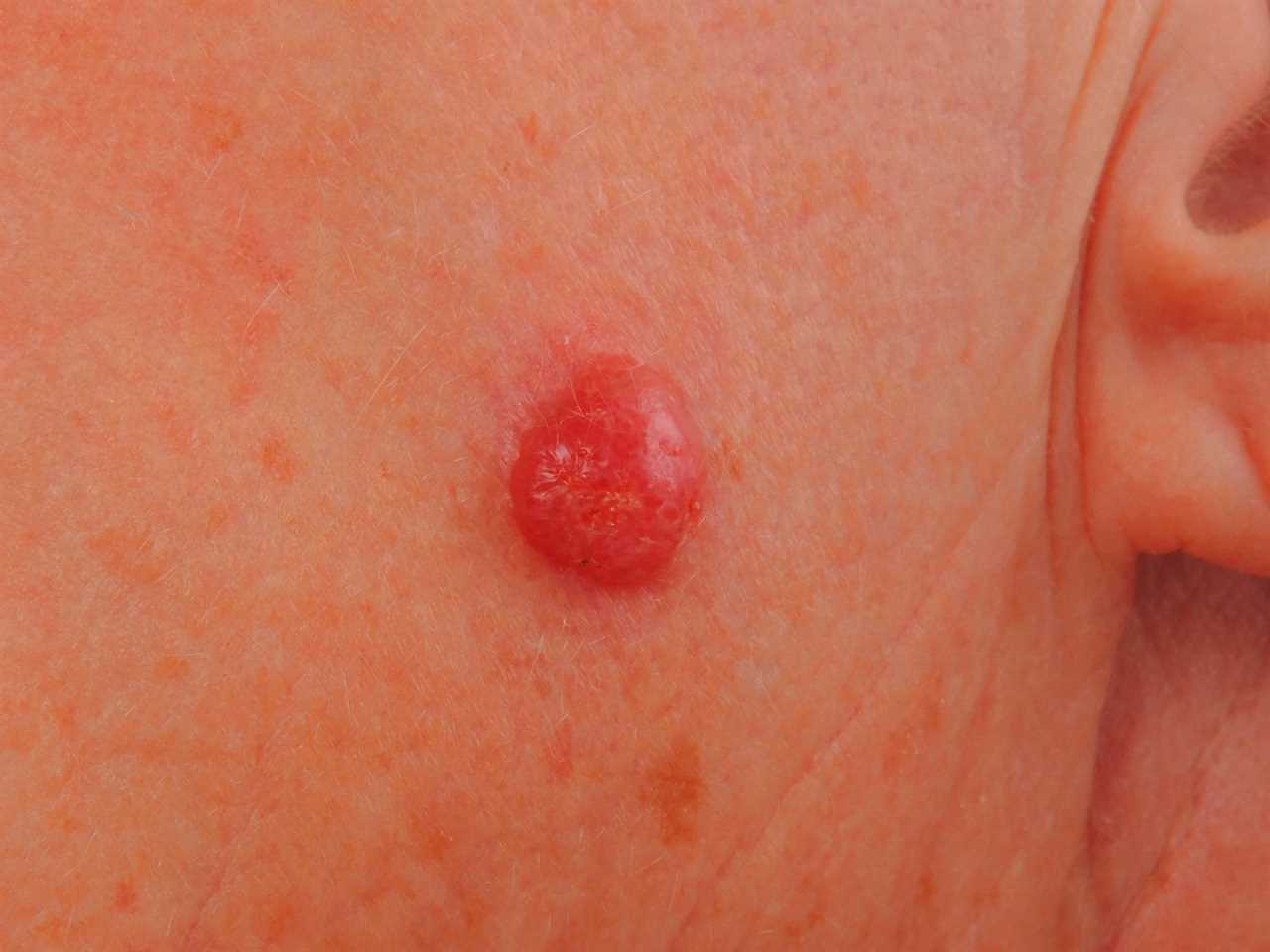
Nodular melanomas are a faster-developing type of melanoma that can quickly grow downwards into the deeper layers of skin if not removed.
They usually appear as a changing lump on the skin which might be black to red in colour.
Often nodular melanomas grow on previously normal skin and most commonly occur on the head and neck, chest or back.
A common symptom is bleeding or oozing.
Lentigo maligna melanoma
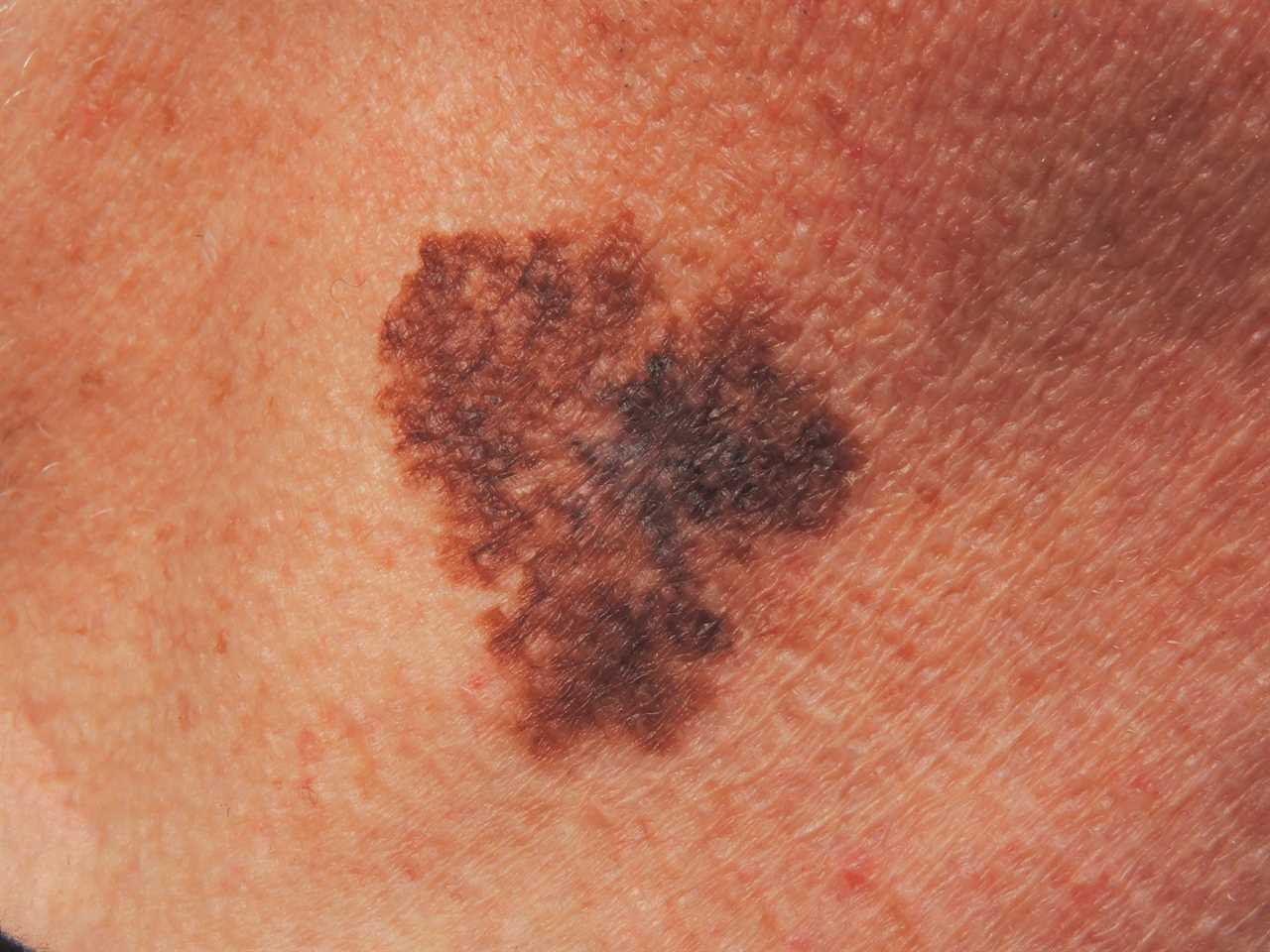
These most commonly affect older people, particularly those who’ve spent a lot of time outdoors.
They develop slowly over a number of years and appear in areas that are often exposed to the sun, such as the face.
To start with, lentigo maligna melanomas are flat and develop sideways in the surface layers of skin.
They look like a freckle but they’re usually larger, darker and stand out more than a normal freckle.
They can gradually get bigger and may change shape and at a later stage, they may grow downwards into the deeper layers of skin and can form lumps.
Basal cell carcinoma
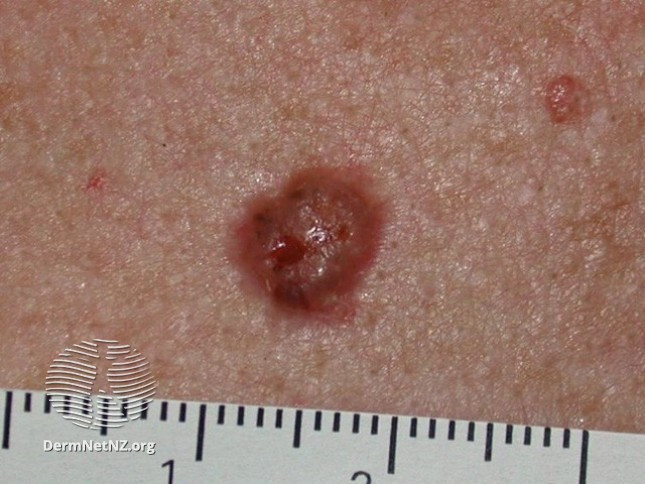
Basal cell carcinoma (BCC) is sometimes referred to as a rodent ulcer.
The disease affects the outermost layers of cells in the skin.
Around 75 per cent of all skin cancers are BCCs, which are typically slow-growing and almost never spread to other parts of the body.
If treated at an early stage, this form of skin cancer is usually completely cured.
But if they do become more aggressive, BCCs may spread into the deeper layers of the skin and into the bones – which can make treating it more difficult.
Signs of BCCs, include a skin growth that:
- Looks smooth and pearly
- Seems waxy
- Looks like a firm, red lump
- Sometimes bleeds
- Develops a scab or crust
- Never completely heals
- Is itchy
- Looks like a flat red spot and is scaly and crusty
- Develops into a painless ulcer
Squamous cell carcinoma
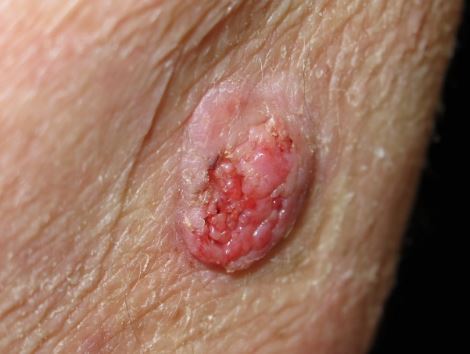
Another form of non-melanoma, skin cancer, is squamous cell carcinoma.
This is a cancer of the keratinocyte cells which are in the outer layer of the skin.
These cells are mainly found on the face, neck, bald scalps, arms, backs of hands and lower legs.
It is the second most common type of skin cancer and may:
- Appear scaly
- Have a hard, crusty cap
- Raised skin
- Tender to touch
- Bleed sometimes
When found early, skin cancer can often be treated successfully.
How skin cancer is treated depends on a few factors.
Types of treatment can depend on the type of skin cancer, how far it’s spread, where the cancer is and what stage it’s at.
The main treatment for skin cancer is surgery to remove it from the affected area.
Usually, the surgery carried out is minor and carried out under local anaesthetic.
An expert’s view
Matthew Gass, of the British Association of Dermatologists, said: “You should regularly check your skin for signs of skin cancer, particularly changes to the skin, or get a partner to help.
“It can sometimes be tricky to be sure about changes on your skin so you can always take pictures on your phone to compare against.
“Skin cancer isn’t something that just arises from moles, so keep an eye on any changes to your skin, and speak to your doctor if you are unsure.”
He added that the ABCDE rules describe a few changes that might indicate a melanoma:
- A – asymmetry – the two halves of the area may differ in shape or colour
- B – border – the edges of the area may be irregular or blurred, and sometimes show notches
- C – colour – this may be uneven. Several different shades of black, brown and pink may be seen
- D – diameter – most melanomas are at least 6mm in diameter. Report any change in size, shape or diameter to your doctor
- E – evolution – if you see progressive changes in size, shape or colour over weeks or a few months, you must seek expert help
Mr Gass added: “For non-melanoma skin cancers, which are very common, there can be quite a bit of variety in how they look.
“Non-melanoma skin cancers can occur on any part of the body but are most common on areas of skin that are most often exposed to the sun such as your head and neck (including lips and ears) and the backs of your hands.
“They can also appear where the skin has been damaged such as old scars, ulcers, burns, X-ray damage or persistent wounds.
“They may appear gradually on the skin and will get bigger over time. They will not go away on their own without treatment.
“If in doubt, check it out. If your GP is concerned about your skin, make sure you see a dermatologist. Your GP can refer you via the NHS.”






